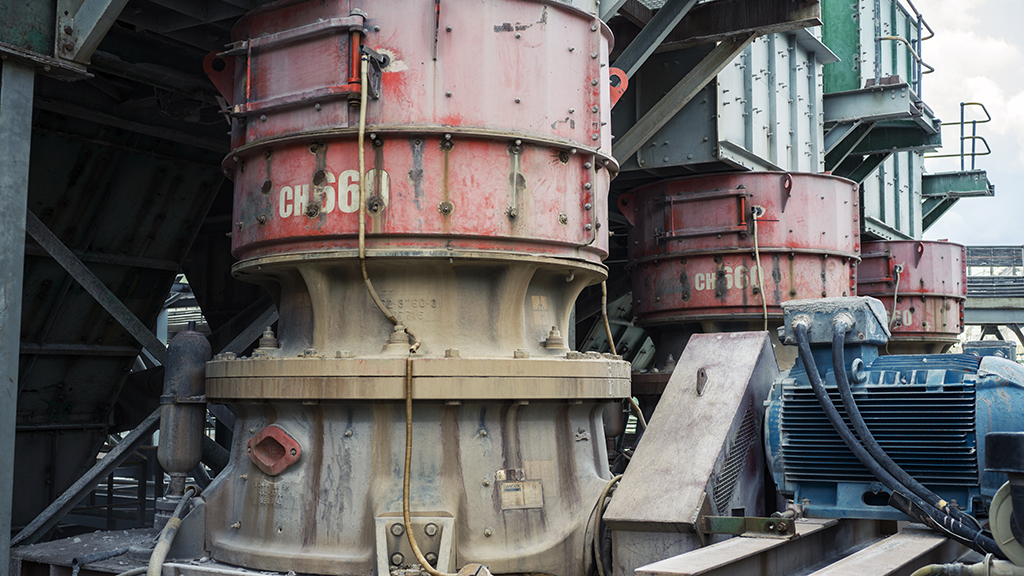Process success
TARKWA, GHANA. Low grades and high ore volumes put pressure on the process plant at Gold Fields’ Tarkwa gold mine, one of Ghana’s largest surface operations.
There aren’t many quiet moments at the carbon-in-leach (CIL) plant at Gold Fields’ Tarkwa mine. High throughput and gold recovery are essential for maintaining profitability at the low-grade operation, and a steady stream of ore flows through the CIL plant around the clock. The high-volume surface operation is located in southwestern Ghana, approximately 300 kilometres by road west of capital Accra. The open pit sits just northwest of Tarkwa, a town of 30,000 that’s home to the George Grant University of Mines and Technology – the esteemed school where many of Ghana’s mining engineers earn their education. Tarkwa mined 103.8 million tonnes in 2017 to produce 566,400 gold ounces at a grade of 1.3 grams per tonne. With grades declining and reserves depleting, metallurgical manager Henry Mensah Atakora and his colleagues must keep rock moving once it’s extracted from the operation’s four pits. “Because of the high throughput, there’s no margin for error,” says Atakora, who oversees all processing stages at the mine. “Any time you lose, it affects what you’re able to put through and to report on. And so it puts a lot of challenge on the whole team because there’s no room for slips. Any slip means that you don’t meet your targets. The fixed equipment like the crushers and the mills and the pumps, everything has to be ticking.”
Ore is processed in an efficient conventional carbon-in-leach (CIL) plant. Originally commissioned in 1997 as a heap leach operation, Tarkwa built its first CIL plant, with a design throughput of 4.2 million tonnes per annum (Mtpa), in 2004. The mine initiated an expansion in 2007 to nearly triple that capacity to 12.3 Mtpa, and that plant was commissioned in 2009. Falling recoveries and increasing ore hardness as pits deepened led Tarkwa to end all heap leach operations at the end of 2013.
Gold Fields
Gold Fields Limited is one of the world’s top 10 gold producers, with eight operating mines in Australia, Ghana, Peru and South Africa. The company produced 2.16 million gold-equivalent ounces in 2017 and has gold reserves of around 48 million ounces and gold resources of around 100 million ounces.
The most viable processing alternative proved to be optimizing the existing CIL plant once again in 2014 to increase capacity to the current 13.5 Mtpa. “The grades are low so we have to push a lot of tonnes through the crushing circuit and also the mill,” Atakora says. “On a daily basis on the crushing side, we’re looking at about 40,000 to 45,000 tonnes.” Tarkwa has relied on Sandvik crushers for more than 20 years, and the CIL plant today features six Sandvik CH660 tertiary crushers installed in 2011 and two Sandvik CS660 secondary crushers installed in 2012. “Our material was getting too hard and throughput was becoming a concern, so we decided to upgrade our H4000s, installed in the late 1990s, to CH660s,” says Kofi Arhin, CIL plant engineer. “We engaged Sandvik engineers to look at our challenges and our bottlenecks. We couldn’t have done the project without Sandvik. Their guys were fully involved from day one through commissioning of the new crushers.”
The CIL plant operates at a cost of around 11 USD per tonne, processing ore at a rate of up to 1,650 tonnes per hour. Plant availability hovers between 93 and 94 percent, considerably above the 90 percent target. “We tend to have a few restrictions on the milling side but with the product that is coming from the crushers from Sandvik, initially we were doing minus 25,” Arhin says.
“Now we have been able to optimize the circuit to be getting minus 17 and that has given us a huge improvement when it comes to the milling operations. It has been wonderful.” In addition to supplying durable crushing equipment capable of handling the mine’s demanding throughput, Sandvik also provides technical training to Tarkwa’s plant operators and maintenance personnel to improve their knowledge and skills. The training helps the mine improve safety, reliability and productivity while reducing maintenance hours and extending equipment longevity. “The technology of our crushers has evolved over the years so we count on Sandvik for technical training,” Arhin says. “As part of our learning and development Sandvik leads a one-week program, including a practical training. It really strengthens our relationship.” The CIL plant at Tarkwa introduced condition-based maintenance in 2013, which Arhin says has preserved pinions and other wear parts and helped keep availability high. “Every week we take samples of the oil and send it to the lab, which analyzes it and can predict problems before they happen,” he says. “We didn’t do this alone. We did it in consultation with Sandvik.
“Their service team looked at some of our wear components and they could tell there was an issue with our oil, and they recommended actions for improvement.” “Sandvik brings a lot of expertise in terms of diagnosis of the issues of the problems that we have, and then in terms of supplying us with equipment and obviously engineers and technicians to resolve issues when we have them,” Atakora says. “They are always ready to come and assist us. They provide extra support in terms of their knowledge base and what we need to do to make sure we keep our equipment running.”
Tarkwa is expected to produce around 520,000 gold ounces during 2018, in line with a revised mine life of five to six years for its current design. Arhin and his team are enjoying the challenge of maintaining and improving the CIL plant’s high processing efficiencies to help keep the mill fed. “There’s always pressure,” Arhin says. “There are always demands. But with the right resource, the right support from OEMs like Sandvik and the right support from the management team, we can achieve any target.”
Tarkwa gold mine
Gold Fields’ Tarkwa open pit gold mine in southwestern Ghana was commissioned in 1997 and has since produced nearly 10 million ounces of gold. Ore is mined from four large open pits: Pepe-Mantraim, Teberebie, Akontansi and Kottraverchy. Tarkwa is expected to produce around 520,000 gold ounces during 2018 in line with a revised life of mine plan.

/https%3A%2F%2Fsolidground.sandvik%2Fwp-content%2Fuploads%2F2018%2F08%2FNAPO171003AL_005_1600x750.jpg)
/https%3A%2F%2Fsolidground.sandvik%2Fwp-content%2Fuploads%2F2018%2F08%2FNAPO171002AL_039_1600x750.jpg)
/https%3A%2F%2Fsolidground.sandvik%2Fwp-content%2Fuploads%2F2018%2F08%2FNAPO171002AL_016_1600x750.jpg)


/https%3A%2F%2Fsolidground.sandvik%2Fwp-content%2Fuploads%2F2020%2F03%2FOconee-micro-thumb-16-9_1600x570.jpg)
/https%3A%2F%2Fsolidground.sandvik%2Fwp-content%2Fuploads%2F2020%2F03%2FOconee-macro-thumb-16-9_1600x570.jpg)
/https%3A%2F%2Fsolidground.sandvik%2Fwp-content%2Fuploads%2F2020%2F02%2FNAPO191125AL_068_1600x570.jpg)
/https%3A%2F%2Fsolidground.sandvik%2Fwp-content%2Fuploads%2F2020%2F02%2FRegis_mill_1600x570.jpg)
/https%3A%2F%2Fsolidground.sandvik%2Fwp-content%2Fuploads%2F2020%2F02%2FNAPO191121AL_005_1600x570.jpg)
/https%3A%2F%2Fsolidground.sandvik%2Fwp-content%2Fuploads%2F2020%2F02%2FSandvik-ACS-Automation-Connectivity-System_53036_1600x570.jpg)
/https%3A%2F%2Fsolidground.sandvik%2Fwp-content%2Fuploads%2F2019%2F08%2FNAPO181010AL_014_1600x570.jpg)
/https%3A%2F%2Fsolidground.sandvik%2Fwp-content%2Fuploads%2F2019%2F08%2FNAPO180903AL_055_1600x570.jpg)
/https%3A%2F%2Fsolidground.sandvik%2Fwp-content%2Fuploads%2F2019%2F06%2FNAPO180903AL_066_1600x570.jpg)
/https%3A%2F%2Fsolidground.sandvik%2Fwp-content%2Fuploads%2F2019%2F04%2FEl-Teniente_c1.jpg)
/https%3A%2F%2Fsolidground.sandvik%2Fwp-content%2Fuploads%2F2019%2F04%2FCH870i-16-9-2_1600x570.jpg)
/https%3A%2F%2Fsolidground.sandvik%2Fwp-content%2Fuploads%2F2018%2F08%2FNAPO171003AL_005_1600x570-1.jpg)